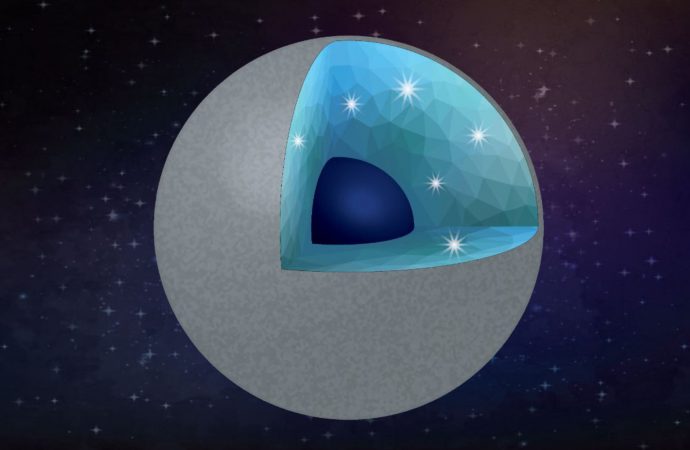Extrasolar planets hosted by stars with sufficiently high carbon-to-oxygen ratios could be made of diamonds and silica, according to new research by Arizona State University and the University of Chicago.
Source: Sci News
When stars and planets are formed, they do so from the same cloud of gas, so their bulk compositions are similar.
A star with a lower carbon to oxygen ratio will have planets like Earth, comprised of silicates and oxides with a very small diamond content.
But exoplanets around stars with a higher carbon to oxygen ratio than our Sun are more likely to be carbon-rich.
Arizona State University researcher Dr. Harrison Allen-Sutter and colleagues hypothesized that these carbide exoplanets could convert to diamond and silicate, if water were present, creating a diamond-rich composition.
“These exoplanets are unlike anything in our Solar System,” Dr. Allen-Sutter noted.
To test this hypothesis, the scientists needed to mimic the interior of carbide exoplanets using high heat and high pressure.
To do so, they used high pressure diamond-anvil cells in a lab.
First, they immersed silicon carbide in water and compressed the sample between diamonds to a very high pressure.
Then, to monitor the reaction between silicon carbide and water, they conducted laser heating, taking X-ray measurements while the laser heated the sample at high pressures.
As they predicted, with high heat and pressure, the silicon carbide reacted with water and turned into diamonds and silica.
While Earth is geologically active, the team’s results show that carbide planets are too hard to be geologically active and this lack of geologic activity may make atmospheric composition uninhabitable.
“Regardless of habitability, this is one additional step in helping us understand and characterize our ever- increasing and improving observations of exoplanets,” Dr. Allen-Sutter said.
“The more we learn, the better we’ll be able to interpret new data from upcoming future missions like the James Webb Space Telescope and the Nancy Grace Roman Space Telescope to understand the worlds beyond on our own Solar System.”
A paper on the findings was published in the Planetary Science Journal.
Source: Sci News

































Leave a Comment
You must be logged in to post a comment.